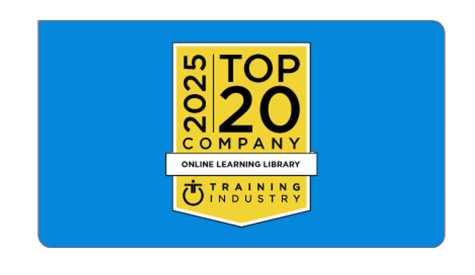How to Conduct Employee Training Assessments

Before you even start thinking of how to setup your employee training program, you’ll need to think about how to conduct employee training assessments. Not only will it indicate that you need a training program, but it will influence how you set it up.
So how would you start? What tools would you need? Where do you start looking?
The good news is that you don’t need a complicated employee training needs assessment tool or program. Chances are, you already have several tools at your disposal (or, if these tools are not currently used by your organization, you can easily make the case for them, as they often do “double duty” for training needs assessment and employee feedback/evaluation).
So, whether you’re doing a gap analysis for your current employees or simply looking for some ways to conduct a training needs assessment for new employees, the following five tools can be a great place to unearth training needs—especially if used in combination with each other.

Tool #1: Your Existing Data
It’s likely that you already have plenty of data and information with which you are evaluating your employees. Used creatively, this can be a great source of data for employee training needs as well!
For example, your official HR records might already hold things like standard job descriptions, performance evaluations, and even accident and safety reports. Any quantifiable data you are already collecting can be used to spot training needs.
For example, does your organization track any of the following?
- Production numbers (sales closed, calls completed, items assembled, etc.)
- Customer satisfaction scores
- Safety incident reports
- Overtime hours worked
- Order accuracy
- Employee surveys
The great thing about quantifiable data like this is that you can easily state goals for your employees and then assess the effectiveness of your training program in light of those goals. For example, if you know the number of overtime hours worked, you can make it your goal to reduce overtime by, say, 20%. This might require job-specific training (so people know how to do their job effectively and safely), perhaps training for interviewing technique to find the right candidates to begin with. Or, training could revolve around things like time management and prioritizing tasks. Another example: Maybe your goal is to increase the number of sales closed by 40%. Your training would then focus on things like sales closing techniques.
Don’t just stop at quantified data, either. For example, exit interviews are a great, rich source of information on training needs. Many employees leave for a role at another company when they feel they are not giving the right training opportunities at their current job!
Tool #2: Testing (Formal Assessment)
The use of formal employee assessment tools (specifically, what folks in the industry call “psychometric testing”) has been on the rise for about a decade now. Formal testing allows an organization to zero-in on the exact qualities and competencies needed for a particular role, and then measure the degree to which those exist in an employee or job candidate.
There are some well-known tests widely used today, such as the Myers-Briggs Type Indicator (MBTI) and DISC analysis. These kinds of tests assess personality and communication styles. That information can also translate into a blueprint for skills training.
Think about it this way: Every personality type has its strengths and weaknesses, especially when it comes to working with others. Thus each type will have unique challenges when working to meet deadlines, communicating on teams, and even managing other employees. For example, an ENTP on the Myers Briggs might be very capable of defining mission and vision, but in need of help when it comes to organizing everyday workflows or engaging in situations that require a little more diplomacy. An ISTJ, on the other hand, will likely handle things like deadlines and regulations well, but could use help in understanding best practices for change management.
Different personality types also tend to learn differently, too. This is why such testing should be one of the first tools that you use for employee training assessment, as it can inform how you proceed with your training as well as what your training covers.
Tool #3: Employee Self-Assessment
Employee self-evaluation serves a dual purpose: It engages employees more fully in the assessment process, and it also gives them more control over their own career paths. Most self-assessments ask employees to list the following:
- Their strengths
- Their weaknesses
- Their most recent accomplishments
- Their goals, in both the short- and intermediate-term
You can learn a lot from even simple evaluations. For example, do you have employees with goals that include promotion to management? These are employees that should start taking management training courses to learn more and to see if this is the right move for them. Is an employee listing accomplishments that were done solo, as an individual? Read in-between the lines: Maybe this employee needs help learning how to accomplish things with a team. Are they listing weaknesses that have to do with communicating their ideas? Or dealing with conflict? These are things that can benefit from training, too.
This kind of assessment can be beneficial for both new and existing employees. The elements on this list are exactly the kinds of questions that employers ask employees in job interviews. That’s not by accident! A large part of the job interview process is geared towards evaluating an employee’s actual competencies. If your organization asks these kinds of questions, you can request a recording of the interview and use that as a kind of employee self-assessment to identify training needs.
Tool #4: Manager Assessments
Naturally, your managers will be in a position to evaluate the quality of your employee’s work. In fact, they might already do this as part of an annual or quarterly performance review. You should seize upon this opportunity to find skills employees need training on, both for their current roles and for their “stretch goals.”
For example, management assessments can give you insight into things like work completed vs. workload. An employee that does good work but has trouble finishing jobs or meeting deadlines might need help with time management. On the other hand, work that is rushed but sloppy might indicate that employee needs to brush up on their basic skills training. It could also signal that the manager in question could use some additional training on giving feedback or engaging employees.
Manager assessments can also give insights into the “softer” parts of a job, such as attitude, creativity, and collaboration. All three of these are skills that can be taught, and managers will often be the first to spot the need.
Tool #5: The 360-degree Survey
Self-assessments and manager assessments are both common arts included in a broader 360-degree assessment survey. A 360-degree survey collects feedback about an employee (and his or her performance) from managers, peers, direct reports, and the employee in question (and sometimes even external sources, such as clients and vendors) in order to get a more complete picture of where the employee is, and what he or she still needs to work on.
In many corporate settings, the 360-degree survey is already used as part of a performance review. If so, then you don’t have to introduce a new kind of assessment—the information is already there. In fact, 360-degree surveys make even more sense as development tools in addition to performance indicators. (If your organization does not use these kinds of surveys, they are readily available, and might be well worth using for assessing training needs.)
Importantly, the survey you use needs to be tied to the required competencies you have already identified. Then, it can act as a “trigger” for the appropriate competency-based learning track.
Additional Reading
Employee training assessment, though crucial, is just one small part of a successful training program. Some of the following resources and guides can help you build or revitalize your employee training:
- If you are interested in learning more about today’s skills gaps and how they are creating our current labor shortage, I recommend downloading our white paper “Labor Shortages and Skills Gaps: Why today's economy needs quality training now more than ever.”
- If you are just starting out on the path to creating an effective employee training program, see my “Guide to Creating an Employee Training and Development Program.”
- On the other hand, if you have a training program you are trying to breathe some more life into, give my “7 Ways to Revitalize Your Employee Training Program” a read.


